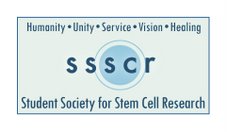Fetal tissue shows promise for ALS in study
Neurons protected in rats in UW research
By JOHN FAUBER
jfauber@journalsent
Posted: Aug. 1, 2007
Sometimes the inspiration for scientific research comes from the most
unexpected places.
Jeff Kaufman's bedroom.
For much of the past 18 years, he has resided there, gradually losing
the ability to move, speak or breathe on his own, as nearly all of
his nerve cells that control movement have died off as the result of
ALS, also known as Lou Gehrig's disease.
But the gears in the brain of the former lawyer have been turning,
his ideas put into words through a novel computer device set up at
his bed that allows him to communicate by grinding his teeth.
The driving force behind an annual ALS fund-raiser, Kaufman and his
event have generated more than $2.3 million for research, including a
University of Wisconsin-Madison study published Wednesday that could
be an important development in finding new treatments for the disease.
The study, published in the journal Public Library of Science (PloS)
One, found that genetically engineered fetal stem cells implanted in
rats with ALS provided substantial protection for motor neurons, the
nerve cells that die in ALS.
"It's clearly an important step," said Chris Henderson, co-director
of the Columbia University Motor Neuron Center.
The study included techniques that have raised ethical concerns in
the past - using fetal tissue to create chimeras, creatures that
contain both human and animal cells. The techniques followed National
Institutes of Health guidelines and were approved by the university's
institutional review board.
For the study, UW-Madison researchers used a type of early human
brain cell known as neural progenitor cells that were obtained from
fetal tissue. The tissue came from miscarriages or aborted fetuses 10
to 15 weeks old.
The cells then were genetically engineered so that they produced a
protein known as glial cell line-derived neurotrophic factor (GDNF).
The substance is known to protect and promote the survival of certain
brain cells, including motor neurons.
The engineered stem cells then were injected into one side of the
spinal cords of rats with ALS.
After transplantation, the cells migrated to areas where motor
neurons were dying and began pumping out GDNF, said Clive Svendsen, a
UW-Madison neuroscientist and the study's senior author.
More importantly, the engineered cells helped protect motor neurons.
In the early stages of the disease, nearly 100% of the neurons on the
transplanted side of the spinal cord were protected, compared with
about 40% on the other side of the spinal cord, he said.
In final stages of the experiment, about 25% to 30% of the neurons on
the treated side survived, compared with about 11% on the untreated
side, he said.
"They survived remarkably well," Svendsen said.
The treated nerve cells, however, were unable to maintain or
establish connections to the muscles that they controlled, resulting
in no improved function in the rats.
Henderson, who was not a part of the study, said it appears that GDNF
was doing half of what needed to be done.
"It's keeping the cells alive, but not the muscle," said Henderson, a
professor of pathology, cell biology and neurology at Columbia.
Svendsen and other researchers now are looking at other cell-based
therapies that might establish connections between motor neurons in
the spinal cord and the muscles they control.
Spencer Block, a neurosurgeon with Milwaukee Neurological Institute,
said the study is a first step.
"Anything that can support cell health is encouraging,
said. "There are very limited treatments for ALS."
Making a difference
Meanwhile, ALS patient Kaufman continues to defy the odds and come up
with new ideas from the bedroom of his Brookfield home.
About 80% of people with ALS die within five years, according to the
ALS Association. Only about 10% live 10 years.
Kaufman, 51, was diagnosed in 1989.
He has been hospitalized only once in the past 10 years, said his
doctor, Bonnie Tesch, a Menomonee Falls internist.
She attributed much of that to his attitude.
"He helps other people even from where he is," Tesch said.
Kaufman also gets good daily nursing care, and when it looks like he
may be getting a bacterial respiratory infection, he is put on
antibiotics right away, she said.
Since losing the ability to speak, he has communicated using a
computer that was activated by various body parts, such as his knee,
calf and toe. As he gradually lost use of those muscles, a system was
devised using a microphone that picks up the sound when he grinds his
teeth. He uses that noise to pick letters and words on a computer
screen.
The method can be excruciatingly slow, sometimes taking a day or two
to write a two-page letter.
"I can't imagine how frustrating that is," said his wife, Jan.
The couple have four children, ages 19 to 26.
From his bed, Kaufman, a former UW-Madison long jumper, has kept busy
devising training programs for his children's track pursuits.
He also conceived of and plans the Evening of Hope, an annual ALS
fund-raiser held in March in conjunction with the Wisconsin Chapter
of the ALS Association.
The fund-raiser provided several hundred thousand dollars in research
money for the UW-Madison study.
Using his computer device, Kaufman said he understood how some people
might question the quality of life of someone in the most advanced
stages of ALS.
He said that funding for the study and other research might not have
come had he not been alive all these years running the Evening of
Hope event.
But, he added, "I'm never the only reason people come."
http://www.jsonline
«¤»¥«¤»§«¤»¥«¤»§«¤»¥«¤»«¤»¥«¤»§«¤»¥«¤»§«¤»¥«
¯¯¯¯¯¯¯¯¯¯¯¯¯¯¯¯¯¯¯¯¯¯¯¯¯¯¯¯¯¯¯¯¯¯¯¯¯¯¯¯¯¯¯¯
StemCells subscribers may also be interested in these sites:
Children's Neurobiological Solutions
http://www.CNSfoundation.org/
Cord Blood Registry
http://www.CordBlood.com/at.cgi?a=150123
The CNS Healing Group
http://groups.yahoo.com/group/CNS_Healing
____________________________________________
«¤»¥«¤»§«¤»¥«¤»§«¤»¥«¤»«¤»¥«¤»§«¤»¥«¤»§«¤»¥«
¯¯¯¯¯¯¯¯¯¯¯¯¯¯¯¯¯¯¯¯¯¯¯¯¯¯¯¯¯¯¯¯¯¯¯¯¯¯¯¯¯¯¯¯
Change settings via the Web (Yahoo! ID required)
Change settings via email: Switch delivery to Daily Digest | Switch format to Traditional
Visit Your Group | Yahoo! Groups Terms of Use | Unsubscribe
__,_._,___










